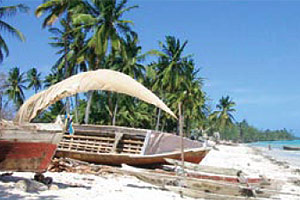It is bounded by Uganda and Kenya to the north; by Rwanda, Burundi and the Democratic Republic of Congo to the west; by Zambia, Malawi and Mozambique to the south, and by the Indian Ocean to the east.
Tanzania’s continental territory is flat and low along the coast. However, a plateau of an average altitude of 1,220 meters above sea level covers most of the country. The northeast and southwest are mountainous, the most important peak being the Kilimanjaro volcano (the highest peak in Africa at 5,895 metres above sea level). Africa’s three great lakes belong to Tanzania: Lake Tanganyika, along the west border; Lake Victoria along the northwest border; and Lake Nyasa (Malawi), along the southwest limit. Its islands are coral and Zanzibar, 90 km long and with a surface area of 1,600 km2, is the largest coral island in Africa.
The most important ethnic groups in Tanzania are the Bantu and Nilotic groups (such as the Massai) of African origin; Arabs, Indians and Pakistanis.
Agriculture is the main pillar of the economy of the country, and the main export products are coffee, cloves, sisal and cotton. Tourism in natural reserves is also an important earner.








 En 1994 muere el pintor chileno Nemesio Antúnez
En 1994 muere el pintor chileno Nemesio Antúnez